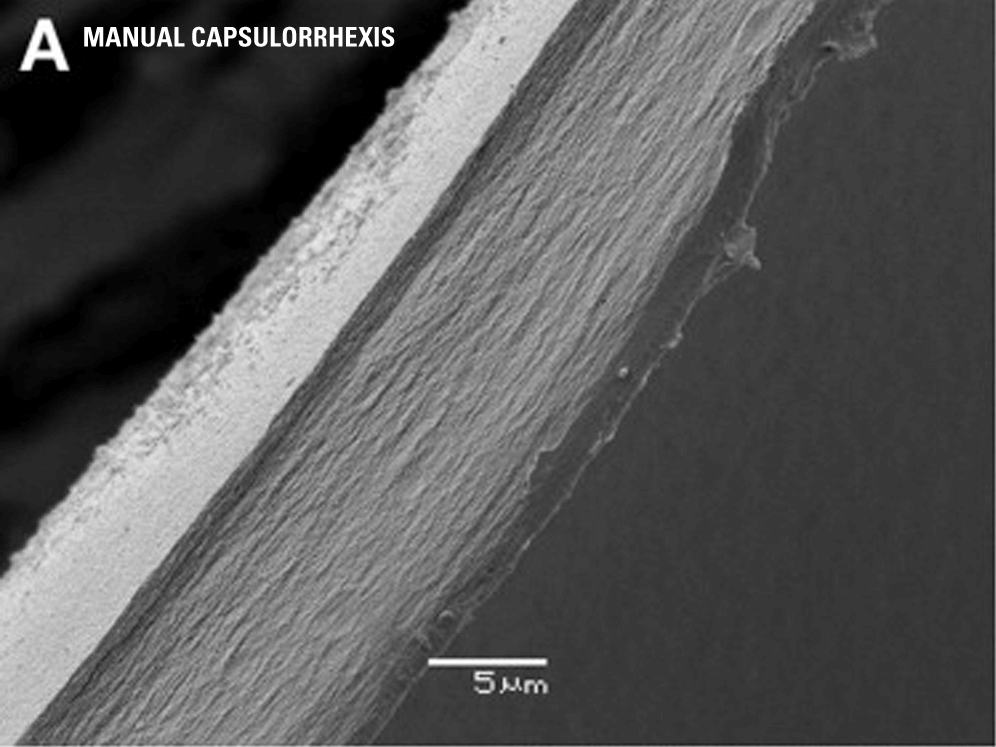Is Laser-Assisted Cataract Surgery
Better than Surgery Done Without a Laser?
It’s not. “But,” you respond, “I saw the ad and the brochure my doctor gave me said it would make the cataract surgery more precise.” Ah, you’ve been caught by a classic marketing ploy: confusing “precision” with “better result”. That’s what the marketers wanted you to think. However, there’s simply no compelling evidence to suggest that more precise creation of a capsular opening results in better final vision. Indeed, recent evidence suggests that those who have laser-assisted cataract surgery may be less likely to have improved vision than had they simply chosen cataract surgery without the use of a laser (more on that below).
UPDATE: In January 2020 the results of the Femtosecond laser-assisted versus phacoemulsification cataract surgery (FEMCAT) study were published in the respected medical journal, “The Lancet”. Almost a thousand patients were enrolled in this study which demonstrated that “femtosecond laser was not superior to phacoemulsification in cataract surgery and, with higher costs, did not provide an additional benefit over phacoemulsification for patients.”
Source: thelancet.com
Are There Additional Risks of Laser-Assisted Cataract Surgery?
Indeed there are. Bet the ad and brochure didn’t mention the following risks which are more likely to occur with laser-assisted cataract surgery than without:
1. Elevation of IOP and Pupil Constriction
The Femto laser must be “docked” onto the eye for proper alignment. This docking increases the intraocular pressure (IOP) inside the eye. For those with glaucoma this could potentially result in permanent loss of vision. Additionally, the docking and/or Femto laser procedure can cause the pupil to constricts[1] making the surgery more challenging for the surgeon (and potentially increasing the risk of complications during the ultrasound portion of the surgery).
2. Capsular Tags
Although manually creating an opening in the capsular bag is challenging for beginning surgeons, this is rarely an issue for experienced surgeons. In the hands of a skilled surgeon the edge of the capsular bag should look like this:
See how smooth the edge is? That gives it strength and prevents it from tearing.

Femto openings in the capsular bag look like this[2]:
Looks a bit like a perforated stamp edge, doesn’t it? There may even be microscopic tags present. This may increase the risk of capsular tears forming during removal of the lens[3]. If an unplanned tear occurs the surgery could be complicated increasing the risk of retinal detachment, infection, or the lens could even drop into the eye.

3. Retained Lens Material
The entire point of cataract surgery is to remove the damaged natural lens and replace it with a synthetic clear lens. The Femto laser can break up the lens making it easier to remove from the eye. Occasionally, however, some of these lens fragments can get lost in the eye only to be discovered during a post-operative exam in the office. If that happens then another surgery is generally recommended to remove the remaining lens fragment.
4. Corneal Swelling
One of the touted features of Femto laser-assisted cataract surgery (FLACS) is “softening of the lens.” The theory is that by using a laser to carve up the lens less ultrasound energy will be necessary in order to remove the lens. Less ultrasound use should be less damaging to the cornea resulting in less corneal swelling (edema). A very large European study (the “FLACS ESCRS Study”), however, demonstrated that those patients undergoing FLACS were five times more likely to experience corneal swelling than those who had cataract surgery without use of the laser! Why is this important? Because corneal swelling doesn’t always go away and can result in reduced quality of vision.
Speaking of reduced quality of vision…
5. Decreased Vision
As already mentioned, many of the ads and brochures describe laser-assisted cataract surgery as more “precise”. This term is intended to suggest that surgery performed with a laser will result in better quality vision. To date, no independent study (not funded by a company that makes or sells Femto lasers) has shown that use of Femto laser-assisted cataract surgery (FLACS) results in better final vision than cataract surgery without the use of the laser.
If there’s no objective evidence that Femto laser-assisted cataract surgery (FLACS) results in better final vision, then why use this technology? Fair question. But, reality may be even worse than that. The same European study that showed a higher rate of corneal swelling among FLACS patients (the “FLACS ESCRS Study”) also noted that almost three times as many patients who had FLACS had worse vision after surgery than those who underwent cataract surgery without the use of the laser!
Conclusions of the FLACS ESCRS Study
Femto Laser-Assisted Cataract Surgery Patients Have:
😢 worse post-operative visual acuity
😢 more post-operative complications
😢 were more likely to have post-op visual acuity worse than pre-op
Get In Touch
Dr. David Richardson has performed thousands of cataract surgeries without the need for laser assistance. Although he finds Femto technology to be interesting he is far from convinced that there is any real benefit to his patients. As such, he has chosen not to recommend this technology to his patients who need cataract surgery.
